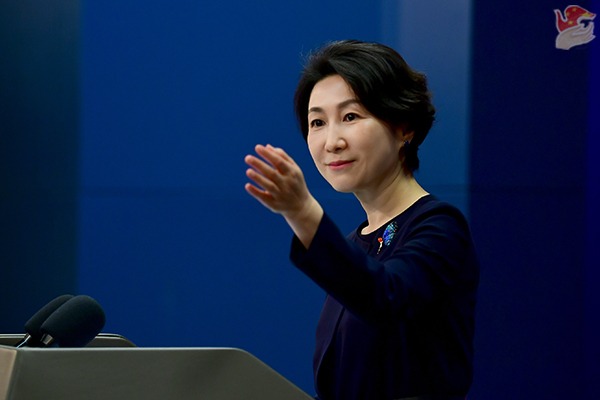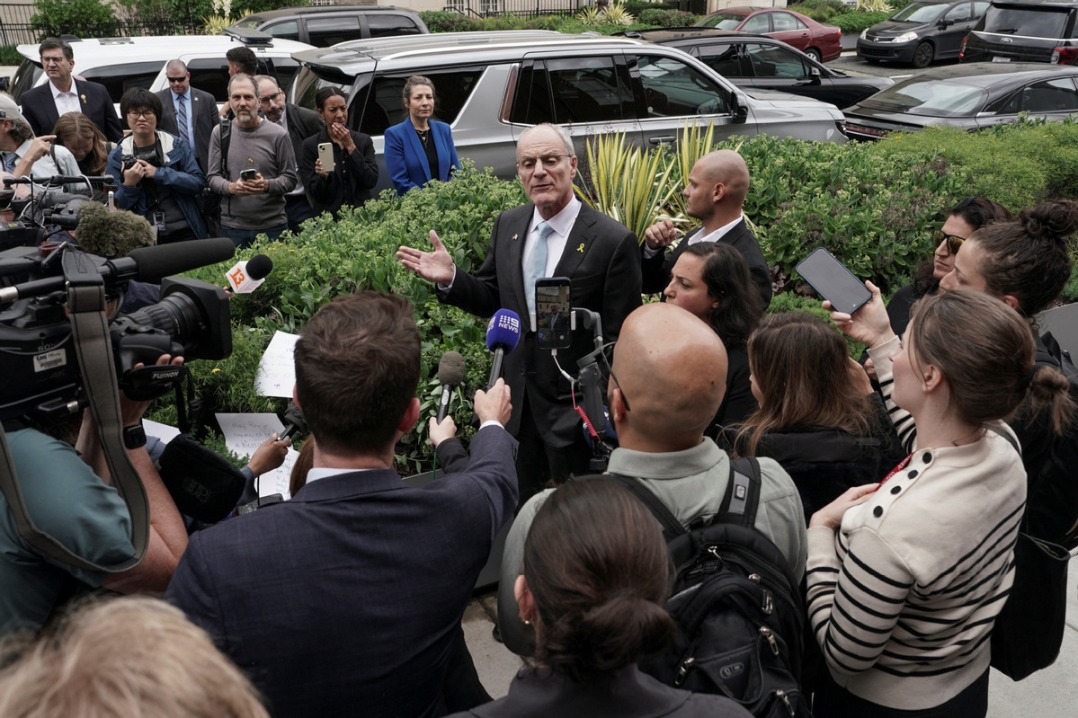Uncover truth about AUKUS


Leaders of the United States, the United Kingdom and Australia announced the establishment of an enhanced trilateral security partnership - AUKUS in a joint statement on Sept 15. According to the pact, the US and the UK will help Australia identify an optimal pathway to build a nuclear-powered submarine fleet over 18 months. Australia expects to build at least eight nuclear-powered submarines in Adelaide with the support of the US and the UK.
The deal is in no way something trivial for regional countries whose nerves shouldn't and cannot stay undisturbed. Explanations and assurances through phone calls by the parties immediately after the announcement wouldn't blur the vision of regional countries to see the strategic calculations behind. Serious consequences are sure to emerge, and the following three of them might be of most significance.
The first consequence would be to create an enormous risk of nuclear proliferation, once rules are broken.
While the rhetoric of the US, the UK and Australia has never been absent of the rules-based order, they themselves have been the actual and biggest rules-breakers.
The Nuclear Non-proliferation Treaty (NPT) is the cornerstone of the international nuclear disarmament and control regime and one of the most fundamental rules of global security. Yet both as nuclear-weapon states bound by the NPT, the US and the UK decided to provide Australia, a non-nuclear-weapon state, with highly enriched uranium (HEU) that could be applied for manufacturing nuclear weapons.
This is an outright betrayal of the NPT spirit and the most consequential violation of the international multilateral rules of nuclear non-proliferation, and it discredits Australia as a self-claimed nation with "exemplary non-proliferation credentials".
The International Atomic Energy Agency (IAEA) has no safeguards for naval reactors which, together with nuclear-powered submarines, is usually regarded as militarily confidential. Therefore, the IAEA has no means available to prevent Australia from withdrawing the nuclear material and applying it to make nuclear weapons. The loopholes in the NPT and IAEA's safeguards shall not be taken advantage of by the three parties as an excuse for the pursuit of their own selfish interests.
The three parties claim to follow the highest non-proliferation standard, have informed the IAEA of the latest development, and commit to do so in the coming months. However, it is in fact almost impossible, if not entirely impossible, for the IAEA to exercise effective verification of what is going on with the submarines while keeping the military data of high sensitivity strictly confidential. This would mean the US and the UK would hand over Australia quite a large amount of HEU with no reliable verification in place. As a result, a huge loophole would be created in the global endeavors of nuclear disarmament and non-proliferation, making nuclear proliferation much riskier.
The second consequence would be to intensify the regional arms race and force regional countries onto a slippery slope toward a new Cold War.
America's claim of not turning the "stiff competition" with China into a "new Cold War" turns out to be hypocritical in the sense that its actions actually go in the opposite direction.
As universally recognized strategic platforms for offensive weapons, nuclear-powered submarines could be the means of delivery for all kinds of advanced offensive weapons. Apart from forming a nuclear-powered fleet, Australia also announced its plan to buy Tomahawk cruise missiles from the United States which might be deployed on its nuclear submarines.
These developments show the determined intention of the three parties to create tensions and divisions in the region, so that the Asia Pacific could be turned into a theatre of rivalry. With AUKUS setting the precedent, some other regional countries, those would-be possessors of nuclear submarines in particular, would feel greatly encouraged and are thus more likely to follow suit. People deserve to caution that two of the four candidates in the leadership election of Japan's Liberal Democratic Party already suggested that Japan consider possessing a nuclear-powered submarine.
Unfortunately, an intensified arms race in the region wouldn't be something the US wants to care. A region with continuous tensions is what it prefers. Such a regional landscape would bring about a lucrative arms industry and perhaps more importantly, better excuses for interference in regional affairs. Yet it is our regional countries that will get hurt. Thirty years on since the end of the Cold War, the AUKUS has put the sound external environment, a fundamental factor that enables prosperity in East Asia for decades, under huge pressure to be altered. If no brake is applied in time, the region risks being forced to endure a new, stormy Cold War.
The third consequence would be to undermine ASEAN centrality and disrupt cooperation in East Asia.
While the US has never been tired of paying lip services to ASEAN centrality, ASEAN centrality is nowhere to be found whenever America is determined to realize its self-interest anyway. The same is also true for the UK and Australia.
As a key part of America's Indo-Pacific Strategy, the new trilateral security partnership is, in essence, another "Anglo-Saxon" circle defined by the close Anglosphere affinity and geopolitical calculations. It will be highly exclusive, just like the QUAD, the Five Eyes and those "camp-style" alliances in the Cold War. These small circles would disintegrate the existing regional architecture with ASEAN in the driver's seat and thus significantly undermine ASEAN centrality.
Australia's acquisition of HEU and formation of a nuclear-powered fleet with the support of the US and the UK run contrary to the purposes and principles of ASEAN's Southeast Asian Nuclear-Weapon-Free Zone Treaty. It goes against the will of ASEAN to keep Southeast Asia free of nuclear weapons and other weapons of mass destruction. While blaming China for the so-called "militarization" in the South China Sea, the US itself is once again proved to be the true driving force of militarization in the region.
What do ASEAN Member States and other regional countries truly long for? I am sure it is no other than the peaceful coexistence of major powers in East Asia, an open and inclusive regional architecture to be consolidated, and a cooperation-oriented agenda with the focus on anti-pandemic endeavors and economic recovery. In no way the answer would be endless geopolitical rivalry, worrying military and security agenda, or being forced to side with anyone. Unfortunately, the policy orientation of the US administration is drifting further away from the wish of regional countries. With the newborn AUKUS, regional countries will get to know better what the Indo-Pacific Strategy of the US is truly about.
Australia could have well heeded the advice of Mr Kishore Mahbubani to "use its special relationship with America to educate America on the long-term values and strategic significance of ASEAN". Yet right on the contrary, Australia has abandoned its strategic autonomy in recent years, danced to America's tune and implemented the "self-destructive policy" toward ASEAN.
It has been almost nine months since the Biden administration took office. Be it the "Kabul Moment" or the AUKUS, it is more than obvious that its foreign policy points to hegemony preservation, sometimes even at the cost of the interest of its allies. "America is back", true, yet not in the way that regional countries wish to see.
The author is Ambassador of the People's Republic of China to ASEAN.

































